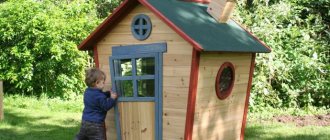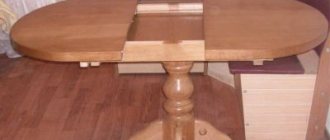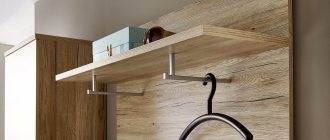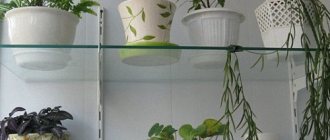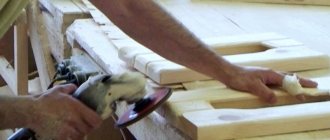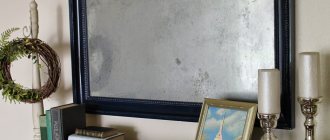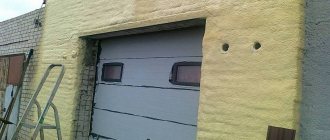Attracting birds to the site is both useful and pleasant. It is useful because they destroy insect pests, it is pleasant to listen to their singing and observe the behavior of birds. That’s why many people come up with the idea of building a birdhouse with their own hands. People over 40 years old can remember their school days: during labor lessons, boys made houses for birds. But it’s not just property owners who make birdhouses. Often residents of apartment buildings hang them on trees near the house, on balconies and loggias.
I want to permeate the city with the singing of birds
What to make from
The answer is clear - from wood, and deciduous trees: conifers are too resinous. The resin can stain the plumage, resulting in the death of the bird. You should not use plywood, chipboard or OSB. Rarely does anyone live in such birdhouses: glue and binders scare away birds. For the same reason, we assemble and fasten the workpieces only with nails or screws, we do not use glue.
Most often, birdhouses are made from boards. The thickness of the boards is at least 20 mm. This thickness is enough to maintain a stable temperature inside, which is important when hatching chicks. Moreover, the boards need to be unplaned; in any case, the inner surface should be rough. The front part under the entrance is also specially scratched: along these notches, chicks and birds rise to the entrance.
The wall under the taphole is additionally scratched
To prevent the boards from cracking during assembly, we pre-drill holes for the screws. The diameter is slightly smaller than the diameter of the screw.
Selection of materials
In recent years, the opinion has spread that a house for feathered neighbors can be built from modern materials. Plywood, paint and glue cans, plastic boxes, and even cardboard and clay are used.
It is important to understand that houses made from such materials are made only for decorative purposes. They are often located close to the house, on lower branches or on the terrace. They are not intended for birds, as they provide poor protection from heat and cold, and some are a source of toxic fumes.
Ready for decoration Source i.pinimg.com
To provide the birds with suitable conditions, the house is made only of wood. Birds are not adapted to living among man-made materials, and wood provides the best protection from rain and maintains a comfortable temperature inside the house.
Light versions for the veranda Source unicorn-workshop.ru
Birds do not care about the color of the birdhouse decor, and you can choose it to your liking. But the paint and glue itself must be chosen without a strong odor; Preference should be given to water-based formulations. Otherwise, the house will remain a sad, uninhabited garden decoration. Wood intended for a birdhouse must have the following characteristics:
- Suitable varieties are birch, alder, aspen, oak. But you should avoid conifers that emit resin. A house made of pine or spruce is not suitable for birds, as over time the inner walls become sticky.
With an aged effect Source live.staticflickr.com
- Dry boards are used in this work. To reliably retain heat, choose boards with a thickness of at least 2 cm. They try not to use glue in the work, for fear of harming the chicks and their parents.
- It is necessary to ensure that nails or screws are not left sticking out of the boards - the birds may get hurt; the optimal length is 4 cm.
- The surfaces of the boards inside the birdhouse are left rough. This will make it convenient for the inhabitants (especially the chicks) to get out.
Birdhouse made of logs Source radikal.ru
See also: Catalog of companies that specialize in the production of finishing and paintwork materials
Sizes of birdhouses for different types of birds
To attract different types of birds, the size of the house should vary. It is mainly the proportions of the “body” itself and the entrance that change. The goal is to create nesting conditions that are more familiar to this species.
| Bird species | Bottom dimensions | Birdhouse height | Taphole dimensions | Note |
| Starlings | 10*10 cm | 30-40 cm | about 5 cm | a taphole is preferable to a round shape |
| Titmouse - tits, flycatchers, redstarts, sparrows, pygmy owls | 10-12 cm | 25-30 cm | 30-35 mm | round entrance |
| Lesser titmouse or flycatcher (flycatchers, redstarts) | 10*8 cm | 25-30 cm | 30 mm | |
| Poluduplyanka | 10*8 cm | 20 cm | height 33-50 mm across the entire width of the wall | taphole - a longitudinal slot across the entire width of the front wall |
As you can see from the table, basically only the height changes. The width remains more or less stable. There is no point in making birdhouses anymore. They will stimulate the laying of more eggs, and the birds will not be able to fully feed a large number of chicks; as a result, the offspring will be weak and, most likely, die.
Which birds settle in which birdhouses
If you want to attract wagtails, make a birdhouse laid on its side: its height will be 10-12 cm and width - 35-40 cm, with the same small entrance located approximately in the middle. Wagtails have weak legs, and they cannot climb a high wall to the entrance. That is why there is such a choice of nesting sites. in the shaker it is also advisable to make a ladder about 10 cm wide in front of the entrance - so that they can enter on foot.
Birdhouse for wagtails
The semi-duplyanka requires some explanation. Some birds are accustomed to nesting not in hollows, but in recesses between branches. They rarely settle in completely closed artificial nesting areas. If you want to attract, for example, a gray flycatcher, make it a small box in which the entrance runs the entire width of the front wall.
Half nest for gray flycatcher
Just keep in mind that some types of squirrels also like to live in such houses.
There is another nesting site that birds often like better - a nesting box. This is a birdhouse made from a piece of log. Often dried wood is cut into logs of suitable size, turning it into apartments for birds. The height and diameter are selected based on the dimensions that were indicated for a regular birdhouse. The bottom and roof of the nest are made from a piece of board.
Duplyanka - birdhouse made of logs
If the birdhouse has a small entrance, the lid is removable. This is necessary so that the insides can be treated from parasites. Sometimes this happens: birds live for several years in a row, and then stop settling. The parasites just multiplied inside. Having removed the lid and thrown out the old nesting box, the birdhouse is scalded with boiling water. This is often enough. You can also treat the inside with a weak solution of potassium permanganate (slightly pinkish).
Safety
It's a shame and a pity when birds' nests are destroyed. This is mainly done by cats, and also by woodpeckers. Therefore, when you make a birdhouse with your own hands, increase the roof overhang. In almost all drawings it is drawn 5 cm long. In order to protect the birdhouse from the cat, it is necessary to make sure that he cannot reach the entrance. To do this, the roof must protrude by at least 7 cm, and it is better to add a couple more - for large specimens. This ledge will also protect from slanting rain: the likelihood that the chicks will get wet becomes even less.
Another option is to put nails on the lid. The cat is unlikely to get hurt, but he won’t be able to sit comfortably - the nails won’t let him.
Make the roof overhang larger so that the cat cannot reach the chicks with his paw.
There are several ways to protect chicks from woodpeckers:
- beat the taphole with tin:
- drive several nails around the tap hole;
- nail a piece of wood on the taphole area, the fibers of which run horizontally.
All this will prevent the woodpecker from expanding the entrance and getting to the eggs or chicks. The last trick - the cover - will also complicate the cat’s task: it is more difficult to reach the chick through a long entrance.
Measures against enemies: 1 - against woodpeckers, 2.3 - against cats
They still escape from cats and possible invaders with the help of protective belts. They are made either from tin strips or from “brooms”. You will understand everything by looking at the picture. Please note that the distances must be maintained within 3-4 cm. Then the animals will not be able to jump over the protective belts. There should be no twigs, feeders or other possible supports between them and the birdhouse.
Where to hang
Where to hang a birdhouse is also a science. If you are going to set it up on a tree, then at a height of at least 2.5-3 meters. There should be no paths or busy places near the selected tree - a well, a bench, etc.
You also need to choose the right place
When choosing a place on a tree, keep in mind that there should be no large branches in front of the entrance: the approach must be free. At the same time, you need to unfold it so that the “window” faces south. All this increases the chances that residents will move into your birdhouse.
Another point: you need to tie or nail it so that the “house” is tilted slightly forward. This will make it easier for the chicks to get out, and less rain will clog them.
How to hang birdhouses correctly
It’s not enough to know how to make a birdhouse correctly and when to hang it. In order for birds to be able to live fearlessly in such an artificial nesting box, it must be properly secured.
The general rules for hanging birdhouses are:
- The entrance should be directed to the southeast. This will allow the first rays of sunlight to enter the nest.
- It must be hung at a height of at least 3-5 m.
- To create safety conditions for birds, nesting boxes are attached to trees.
- The birdhouse for wagtails is attached under the roof of the barn.
- Provided that the birds have been feeding near the house for at least one winter, the nesting box can be fixed on the wall of the house, balcony or under the ceiling of the veranda.
- It is permissible to place a nesting box for starlings in the yard on a pole.
- If birds are fed, birdhouses are placed at least 15-20 m from the feeder so as not to attract predators.
When attaching a birdhouse to a support, it is worth considering that nails are not particularly recommended for this purpose. The use of nails opens the way for pests and diseases, which can negatively affect birds. An even worse option is to use wire and a wooden block driven into the birdhouse. Over time, the log will begin to fall out due to deformations of the wood, and the nesting box itself will lose its strong position on the support. Today you can easily find photos that show how best to mount birdhouses both on trees and on poles.
How to make a birdhouse with your own hands: photo report
We will do the easiest option - with a flat roof. As already mentioned, we take unplaned hardwood boards with a thickness of 20 mm or more. To avoid splinters, it is better to work with gloves. According to the drawing, we cut the blanks. Try to keep the cuts straight and at right angles: there should be no gaps. Immediately after hatching, the chicks are without feathers, and the slightest draft can kill them. Therefore, all edges must be smooth.
Drawing of a birdhouse with dimensions
We take long thin nails - diameter 1.5-2 mm, length 4-5 cm and a hammer. Let's start assembly. We nail the sides to the front part at right angles. For each - three to four nails.
Let's start building a birdhouse
Turning the workpiece upside down, take the bottom, insert it, and level it. We nail it to the sides. We cover the top with the back wall and also nail it. Don't forget about connecting the back wall with the sides.
Insert the bottom and nail the back wall
Turning the tap hole upside down, we nail the bottom on this side as well. All that remains is to assemble the roof. We take the remaining square - the double of the bottom, nail it so that the visor sticking out in front is at least 5 cm (preferably 7-10 cm, as they said before). If the nails stick out, bend them.
We assemble and install the roof
The roof just needs to fit tightly. If something gets in the way, we use a chisel. That's all, the birdhouse with your own hands is ready.
Birds will adapt without a perch
Often a perch is installed under the entrance. Is it needed or not? If there are enough branches around, it’s better not to do it. If there are no branches, you need to either make a perch or a small shelf, although you can do without them. Why? Because cats also rely on them and it is easier for them to reach the chicks with support. How to make a titmouse, watch the video
Dimensions and instructions
To begin, make markings on the prepared boards.
The dimensions of the birdhouse are as follows:
- the bottom is a square, the side of which is 12-13 cm.
- The height of the back wall of the birdhouse is 24 cm, and the front wall is 32 cm. This must be taken into account, because The roof of the birdhouse should be sloping.
- Accordingly, the side walls should be beveled at the top.
- The roof of the birdhouse is made several centimeters larger than the bottom to create a rain canopy over the entrance.
(Click on the picture to enlarge)
Now use a hacksaw to cut out these blanks. Plan the outer surface of the birdhouse for beauty, and in the front wall, using a chisel or drill, make a notch (entrance to the birdhouse) and a perch under it.
The entrance should be made closer to the roof so that cats and other predators cannot reach the birds at the bottom of the birdhouse.
The resulting pieces just need to be fastened together. First, glue them with glue, and after it has completely dried, fasten them with nails or screws.
Please note that you do not need to nail the roof firmly, so that if necessary you can clean the birdhouse; it will be enough to place it on a couple of screws, which are always easy to unscrew.
On the back side of the birdhouse, nail a bar with which the house will hang on the tree.
Making a nest - a birdhouse from a log
If the feathered people have a choice - to live in a nest box or a birdhouse made of boards - they will choose a nest box. It is more similar to the usual “housing” - a hollow, there are no cracks on the sides and, therefore, it is warmer. They are less noticeable on the tree, which means there is a greater chance of raising offspring. These are advantages from the birds' point of view. Now about the advantages from the point of view of the “manufacturers”: a fallen tree is used for work, and it is free. If you find a suitable one, it will be enough for a large number of birdhouses. About the disadvantages - making nest boxes takes longer and is more difficult: you have to manually pick out the core, leaving the walls intact.
From the nest to flight
Now about how to find a suitable tree. Aspen is best suited: it usually rots from the inside, but remains hard along the outer edge. Therefore, we go in search of an aspen forest, and there, among the fallen trees, we look for something suitable: we cut several trunks. It is important to find one with a whole edge and a rotten middle - the work will go faster.
It is advisable to find such aspen - with a rotten core, but strong edges
Often such trees have rotten bark, which makes them look unsightly. We peel off the bark and drag the log to the dacha or house. There we cut it into logs of suitable size. Dimensions are determined by diameter. For a birdhouse, the inner diameter of the nest should be 22-30 cm, respectively, the outer diameter - 27-36 cm. For the titmouse, the sections closer to the top are suitable - the inner diameter is 15-22 cm, the outer diameter is 19-26 cm.
The height of the log also depends on the type of house - a titmouse is 20-40 cm high (but they are more willing to settle in low ones), a birdhouse - from 30 to 45 cm. When sawing, try to make the bevel that appears at the bottom level, and at the top - at a slight slope - so that sediment flowed from the roof. To make roofs and bottoms, you will need cutting boards; you can use unedged boards and slabs.
We take the cut log and begin to pick out the core with a chisel. The task is to dig a through hole. After this, even hard wood is easier to chop. To make the process go faster, you can drill holes with a drill, then break out the jumpers with a chisel.
The task is to dig a through hole
As a rule, the rotten core runs out quickly, then you have to chop off pieces of wood using a chisel and a hammer or mallet. But with a hole in the center it is much easier - the longitudinal pieces are chipped off, the work proceeds at normal speed.
We work with a chisel and hammer
The walls should remain about 1.5-3 cm. We try to work on the middle more or less smoothly, without large chips. When the walls are selected, we make a taphole. If there is a knot, you can hollow it out. Or take a crust and a drill, drill in a suitable place. If there is no crown, take a regular drill, drill holes in a circle, then, using the same chisel, cut through the remaining jumpers.
DIY birdhouse made from logs is almost ready
A piece of board 2-2.5 cm thick goes to the bottom. It is nailed or screwed onto self-tapping screws. The protruding parts are cut off as close to the walls as possible.
Attaching the bottom
All that remains is to nail the roof. The same board or slab will do. Before screwing in the screw, drill holes, otherwise the board may split.
Attaching the roof
Actually, you have already made a birdhouse with your own hands, all that remains is to secure it from attacks by woodpeckers. If there are knots on the walls, it is advisable to coat them with plasticine (regular, children's). They can also be used to seal the gaps that remain between the bottom and the roof and walls: it is rarely possible to fit everything neatly. If you don’t want to cover it with plasticine, you can caulk it with hemp rope. It is applied to the crack and driven into it with a flat screwdriver (actually there are special blades for caulking, but they are large - this is the time, and for “one-time use” you should buy them...). If it doesn't go well, you can hit the handle with a hammer.
Caulking the “seams” with hemp rope
Birdhouse made of paper
A birdhouse made from ordinary paper is not very durable, but it is much easier to make. It can become a decoration for any holiday.
A paper birdhouse is also a great gift wrapper. When making a birdhouse from thin paper, it is better to draw the diagram as a single part, rather than in separate parts. All walls should initially be connected to the bottom, and the roof should be connected to the side walls.
You don’t even need to glue such a craft, just put the gift on the bottom, raise all the walls vertically and tie it with ribbon or decorate it with decorative tape on top.
How to decorate a birdhouse
While the birdhouse is new, it looks relatively good, but after a couple of months it will darken. This is good for the birds - it will become less noticeable and they will only benefit from this. But not all homeowners like to look at such an unsightly “decoration”. To improve the appearance, the birdhouse can be painted, but you need to choose “natural” colors - brown, gray, shades of green. You want your birds to survive, right? This means their nest needs to be camouflaged, and not painted in all the colors of the rainbow, attracting all possible predators.
This is what the wood looks like after a couple of months
Interesting decorated nest box
Being creative can also be safe for birds))
Options for creative nest boxes
If you hang such a house on a birch tree, it will be invisible
Unusual shape
And this one is just ideal - no cracks in the floor))
Titmouse is inhabited
Beautiful decoration and disguise
We hope that now you can not only make a birdhouse with your own hands, but also decorate it competently (from the point of view of the birds).

